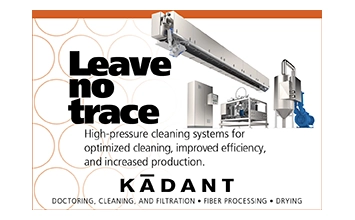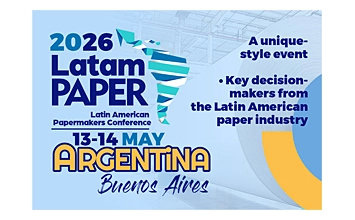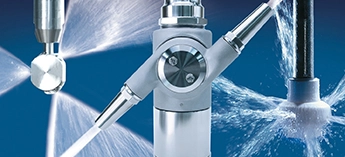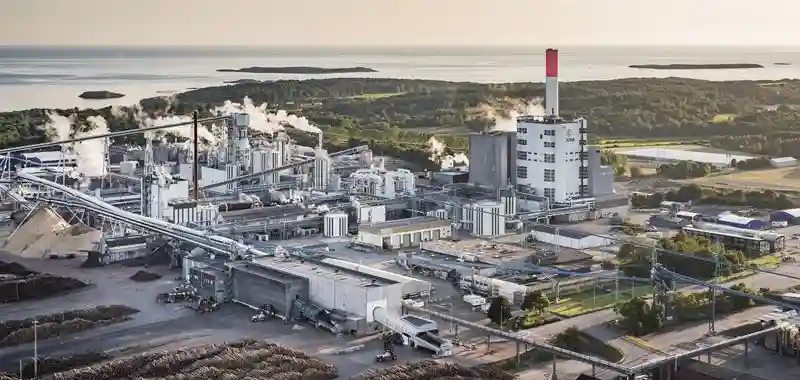Background
The paper industry is among the most energy-intensive industrial sectors, with tissue production requiring, particularly during the drying phase, substantial thermal energy to effectively remove moisture from the paper. Traditionally, this high demand for heat is met by the combustion of fossil fuels, such as Natural Gas or Liquefied Petroleum Gas (LPG).
Considering the European Union’s ambitious goal to achieve net-zero emissions by 2050, there has been increasing interest in renewable gases as part of a broader strategy to decarbonize the energy sector. Among the various renewable energy technologies available, biomass gasification has emerged as a particularly promising solution, offering an effective method for converting solid organic waste into clean energy.
This article explores how biomass gasification can contribute to the decarbonization of a tissue paper plant, with a particular focus on a case study from Sofidel’s tissue mill in Kisa, Sweden, which implemented this technology to replace fossil LPG with renewable biosyngas.
|
Biosyngas is a renewable gas produced by thermal gasification of low-quality biomass residues. In relation to other biogases, the energy carriers in biosyngas are mainly Carbon monoxide (CO), Hydrogen (H2) and Methane gas (CH4). |
Understanding biomass gasification
Biomass gasification is an energy-efficient process that converts low-value biogenic waste into renewable biosyngas, providing a sustainable heat source for industry. Unlike fossil fuels, its CO₂ emissions are biogenic and part of the natural carbon cycle, resulting in net-zero emissions when sourced sustainably.
During the gasification process a highly stable organic carbon fraction remains, called biochar. Biochar serves as a permanent carbon sink when incorporated into soil or used in other carbon-sequestration applications. As a result, biochar is recognized as one of the most effective existing technologies for carbon dioxide removal (CDR).
Case Study: Implementing biomass gasification at a tissue mill in Sweden
Sofidel, a major global producer of tissue paper, has implemented biomass gasification at its tissue mill in Sweden, to replace fossil LPG with renewable biosyngas to fuel its drying process. This transition was made possible through a collaboration with Meva Energy, a Swedish provider of gasification technology, which designed and installed a 4.5 MW gasification plant at the mill, ANDRITZ Enviroburner Multifuel Solutions and Örebro Gasteknik, which contributed to upgrading the burners and burner systems on Sofidel’s paper machines to ensure efficient use of biosyngas.
The plant utilizes locally sourced biomass, such as sawdust and wood residues from nearby sawmills, to produce biosyngas. The gas is used directly in the mill’s drying section, where it fuels burners that provide the high-quality heat necessary for the tissue drying process. The decision to generate biosyngas on-site eliminates the need for fossil fuel imports, reduces transportation emissions, and minimizes energy losses associated with fuel distribution. Moreover, by utilizing locally sourced feedstock, Sofidel has enhanced its energy security and reduced exposure to energy price volatility.

Figure 2.Local and circular energy system. The energy model at the Kisa mill, developed by Meva Energy showcases use of locally sourced biomass waste to produce high-quality renewable gas and biochar at the production site, contributing to both environmental and economic sustainability.
This shift to renewable biosyngas has significant environmental implications. According to estimates, the implementation of this technology will reduce the Kisa mill’s CO₂ emissions by approximately 8,500 tons per year, compared to the consumption of fossil LPG. This reduction represents a substantial contribution to Sofidel’s sustainability targets and is in line with broader EU decarbonization goals.

Figure 3. Meva Energy’s gasification plant is located right next to Sofidel’s tissue mill in Kisa, Sweden.
A potential negative emissions technology
To fully understand the environmental impact of biomass gasification, Meva Energy together with two master students at Chalmers University of Technology conducted a comprehensive Life Cycle Assessment (LCA) of its biomass gasification plant in Kisa. The results are nothing short of promising.
The results of the LCA indicated that the combination of replacing fossil LPG with biosyngas and utilizing the biochar generated for carbon sequestration can lead to a negative emissions scenario. Specifically, the system achieves a net carbon removal of -6 g CO₂-equivalent per kilowatt-hour (kWh) of energy produced when considering the sequestration of biochar.
This finding suggests that the biomass gasification system at the Kisa mill not only neutralizes the emissions associated with energy production but also contributes to the reduction of atmospheric CO₂ concentrations. By incorporating biochar into agricultural practices, carbon is stored in the soil for extended periods, further enhancing the environmental benefits of the system. In comparison, traditional fossil-based alternatives, such as LPG, contribute significantly higher levels of carbon emissions per kWh produced.

Figure 4: The three allocation scenarios of Meva Energy’s biosyngas compared to fossil LPG (Hedbom, H and Lundh, P (2024).
Conclusion
In conclusion, biomass gasification presents a promising solution for decarbonization of a tissue mill, with substantial economic potential. The inclusion of biochar as a byproduct further amplifies the environmental impact of the system, providing a viable method for carbon sequestration.
The case study demonstrates that, through innovative energy solutions, industries, within and outside the paper industry, can achieve not only emissions reductions but also contribute to the broader goal of achieving the European Union's commitment to achieving net-zero emissions by 2050.
References:
- Hedbom, H., & Lundh, P. (2024). Life cycle assessment of biosyngas from a multifunctional biomass gasification plant in Sweden (Master’s thesis, Chalmers University of Technology). Chalmers Open Digital Repository. https://odr.chalmers.se/server/api/core/bitstreams/78ba8906-19ec-479c-ace4-0deaa73ef940/content
About the Author
Elsa Kayser is Communications Officer at Meva Energy
Meva Energy is a Swedish provider of gasification technology that can play an important role in the manufacturing industry’s shift towards renewable energy production. By utilizing locally sourced biogenic waste streams, the technology converts low-quality biomass into high-quality biosyngas, providing a sustainable and stable alternative to fossil fuels like LPG and natural gas.
























































